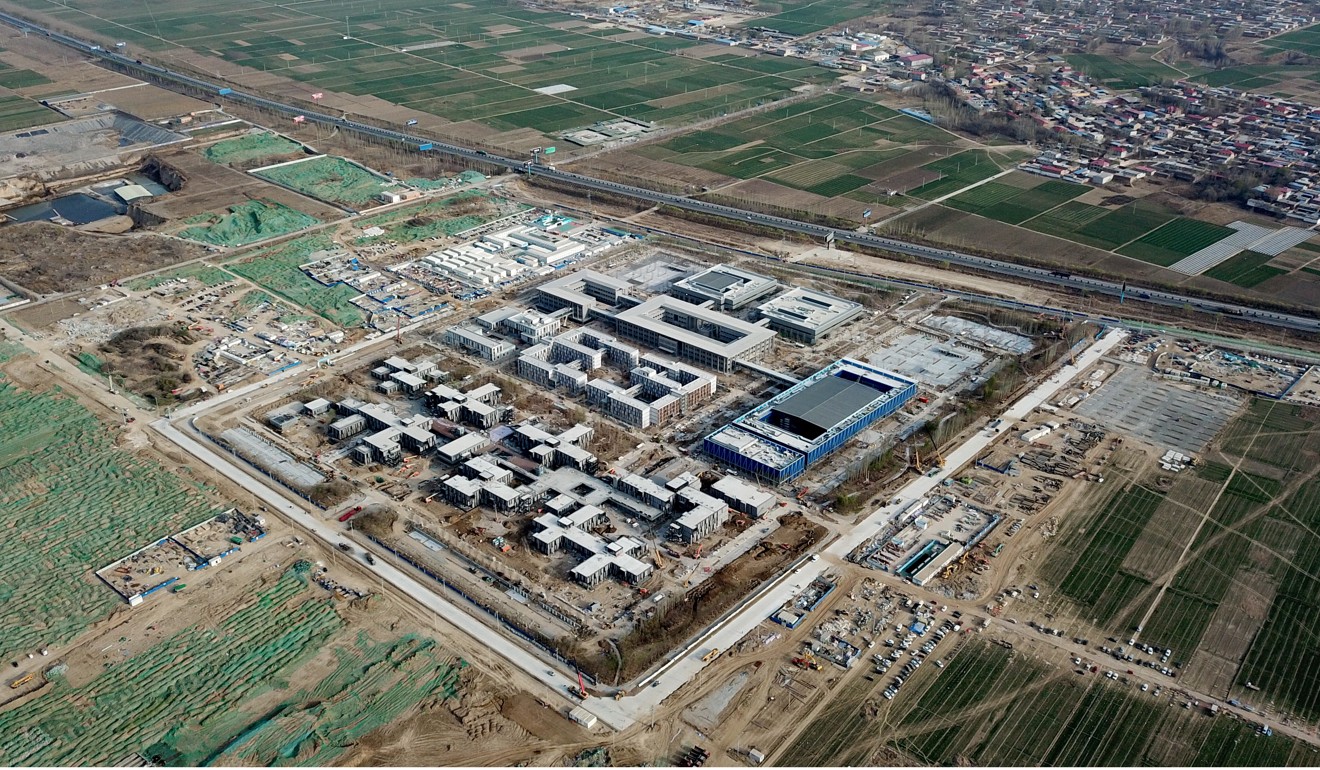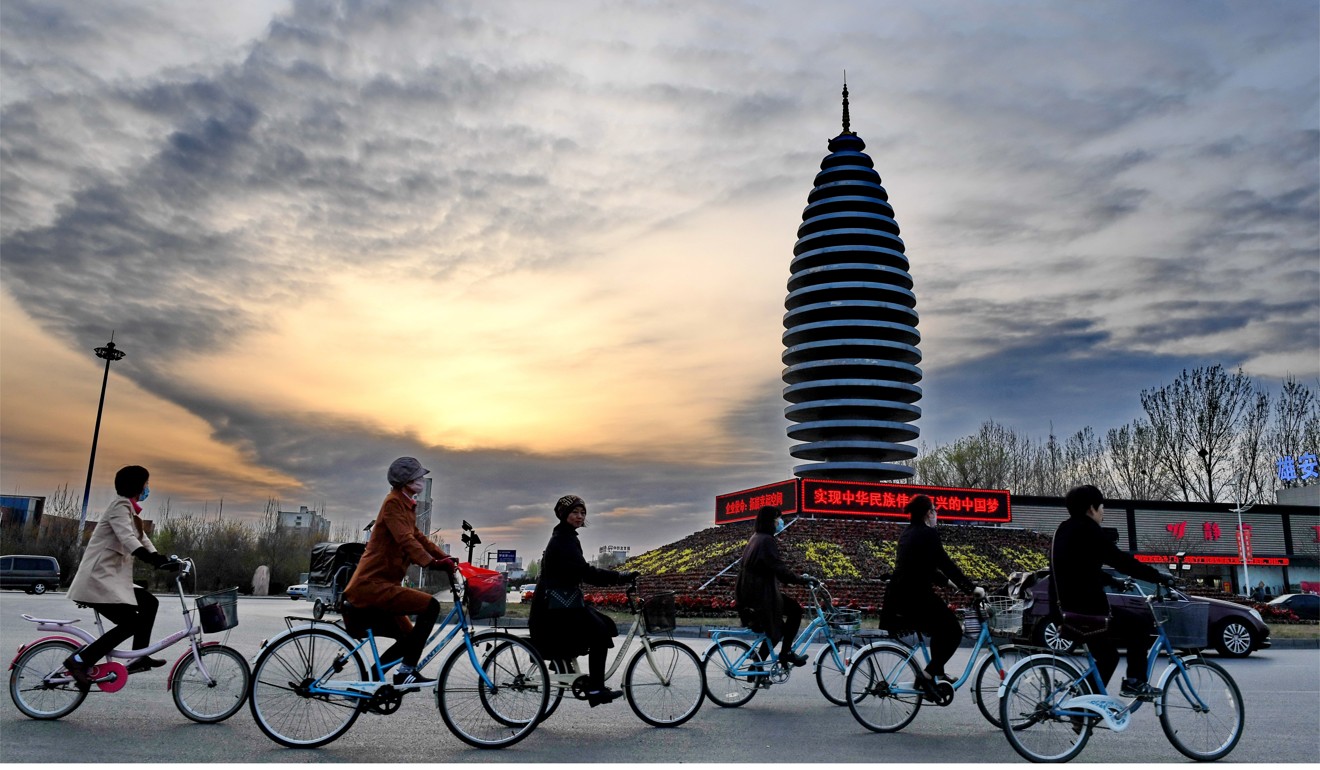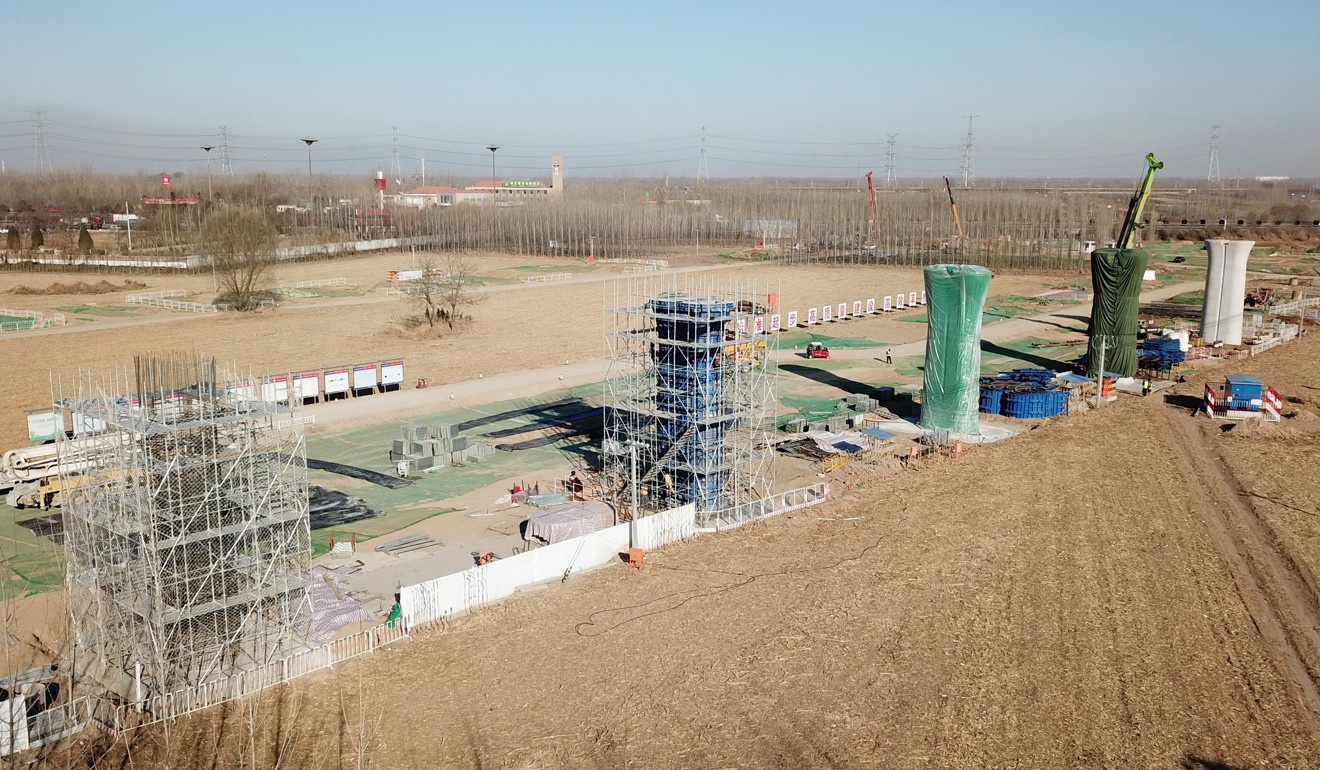
Xi Jinping visits Xiongan New Area in show of impatience at lack of progress on ‘future city’ plan
- Week after president’s trip to north China’s Hebei province, Xinhua publishes 13,000-word document extolling virtues of ambitious development project
- Planned metropolis described as a ‘strategy crucial for a millennium to come’
Beijing has renewed its push to achieve President Xi Jinping’s ambitious plan to create a new metropolis in an industrial and environmental backwater after a two-year lull filled with uncertainty and criticism.
Pundits said the combination of the document and the visit sent a strong signal that despite widespread doubts about the soundness of the mega project and lack of progress on it, Xi had no intention of reconsidering his plan or further delaying its development.
Xiongan calls in ConsenSys to bring blockchain technology to Xi Jinping’s dream city
“Apparently, Xi is not happy with the lack of progress,” said Gu Su, a political scientist at Nanjing University. “He wants to give it another push personally and speed up the development process, especially as he is facing pushbacks from his critics and divergent views over the project’s feasibility and economic viability.”

It is poorly guarded secret that Xi was personally behind the Xiongan project, which was launched in April 2017 in Hebei, an arid region prone to extreme weather and among the worst polluted in the country.
If successful, the development of the area, which is located about 100km (62 miles) southwest of Beijing, would be the largest infrastructure project in the history of modern China. In the new document it is described as signalling “a strategy crucial for a millennium to come”, with the aim of alleviating overcrowding in the capital and disparities in regional development.
Can China’s Communist Party build an innovation capital by decree?
During a tour of Xiongan on January 16, Xi described the project as a “once-in-a-lifetime opportunity” and encouraged state-owned and private companies to help make it a success, Xinhua reported.
Accompanied by Vice-Premiers Han Zheng and Liu He, Xi made Xiongan his first stop on a three-day inspection tour of the wider Beijing-Tianjin-Heibei area.
“Xiongan is a pet project of Xi Jinping’s and as such its progress undulates with the amount of attention he devotes to it,” said Jude Blanchette, a specialist in Chinese politics at the Crumpton Group, an international advisory and business development firm based in the US.
“When the leader is distracted, mega projects like these languish,” he said.

According to a master plan unveiled a year ago, and reprinted in the new government document, Xiongan, which comprises three rural counties, will eventually become a modern, low-carbon, innovation-driven smart city with a population of more than 5 million.
City of London to set up ‘green’ finance centre to help build Xi’s dream city
But two years on from the launch, the area lacks infrastructure and financial support, and despite Beijing’s efforts, few state-owned enterprises, universities, hospitals or research institutions have relocated there.
The disappointing progress does not reflect the initial surge of interest in the weeks immediately after the plan’s launch, when property and land prices soared, causing Beijing to intervene and impose a temporary ban on all real estate deals.

According to Cheng Li, a veteran China observer at US research group the Brookings Institution who claims to have links to China’s top leaders, Xi’s ambition is to have his name associated with a new urban miracle, like Shenzhen and the Pudong area of Shanghai, both of which blossomed during the era of late paramount leader Deng Xiaoping.
“Good news from Xiongan could enhance Xi’s prestige as a farsighted planner. Therefore, Xiongan may serve as a very public gauge of the efficacy of the Xi administration’s policies,” he said in an article published last year on the group’s website.
Despite Xi’s aspirations, the plan has been widely criticised by Chinese academics and experts for the lack of transparency and debate during the decision-making process, and inadequate feasibility studies.
China sets 100 per cent clean power target for Xi Jinping’s new Xiongan megacity
According to Gu, the plan was considered highly controversial among urban planning, economic and environmental experts.
“Many experts and businesspeople have serious concerns over its location, ecological problems and socioeconomic costs,” he said. “And that’s why, as far as I know, many investors who initially showed interest in Xiongan later chose to leave.”

Hu Xingdou, a Beijing-based economist, also expressed concerns, saying the government’s plans were not only sketchy but had failed to assuage concerns about how the goals would be achieved and then sustained.
“It’s worth noting that there have been few success stories so far in our country’s history of building man-made cities without proper planning and the right set of socioeconomic and other conditions,” he said.
“Considering the widespread concerns and doubts, issuing this kind of top-down administrative order [to state-owned enterprises and government-affiliated institutions to relocate to Xiongan] may be the only way to make it happen.”
Stocks linked to Xiongan New Area rally in China as Vice-Premier hints projects set to start
Blanchette agreed, saying: “Xiongan epitomises Xi’s vision for a state-planned and directed type of economic development, with the [ruling Communist] party demanding that the market support its goals.”
“In view of the challenges facing Huawei and ZTE, as well as other political and economic risks, Xi has repeatedly stressed the need for self-reliance … most recently in his New Year’s Eve address,” he said. “It is obvious that he wants to use the development of Xiongan to galvanise support and push his own agenda.”
Blanchett, however, warned against overstating the trade war factor.
“It’s important that we don’t read every action by Xi as a response to the growing US-China tensions,” he said. “Xi has his own calculations to make based on domestic political realities.”


